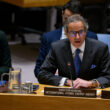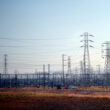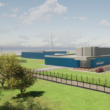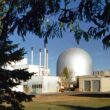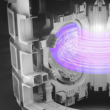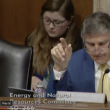Myths about nuclear reliability, radiation, and markets
By Kristin Shrader-Frechette, September 22, 2011
Why do people disagree about atomic energy? In the 1787 Federalist Papers, James Madison warned: “No man is allowed to be a judge in his own cause, because his interest would certainly bias his judgment.” If Madison’s warning applies to this roundtable, two reasons might explain why scientific and market data contradict many roundtable claims:
- Conflicts of interest. One reason might be reliance on biased sources. Consider Tony Pietrangelo’s pro-nuclear citations. None is from a scientific journal. The first is a blog post, and sources for the remaining four claims — the Nuclear Energy Institute (NEI), Entergy, NEI again, and the World Nuclear Association (WNA) — have conflicts of interest. NEI is the lobbying wing of the US nuclear industry. WNA is the global nuclear industry’s lobbying arm. And Entergy is the second-largest US nuclear-electricity generator.
A second reason that might explain disagreement is failure to cite sources. Consider five examples of pro-atomic-energy claims — about nuclear-related radiation, terrorism, costs, fuel, and emissions. All lack citations. All are contradicted by classic scientific or market data.
- Radiation Harms. First, without citation, Charles Forsberg writes, “It’s easy to measure radioactivity at orders of magnitude below the levels hazardous to human health.” However, scientific consensus, articulated by the US National Academy of Sciences (NAS), contradicts Forsberg. Risks from ionizing radiation are “without a threshold”; even “the smallest dose” can harm humans. Yet all reactors release radiation, including tritium, carbon-14, krypton-85, and iodine-129.
- Terrorism. Second, without citation, Pietrangelo says fission plants “can sustain the impact of a deliberate airline crash without releasing radiation at levels that would harm the public.” However, NAS contradicts this claim, warning: “There are currently no requirements in place to defend against the kinds of larger-scale, premeditated, skillful attacks that were carried out on September 11, 2001, whether or not a commercial aircraft is involved. … Some scenarios … could lead to the partial failure of the spent-fuel-pool wall, thereby resulting in the partial or complete loss of pool coolant” — thus fires and major radiation releases.
- Costs. Third, without citation, Pietrangelo claims, “Once a nuclear energy facility is built, it produces electricity at a fraction of the cost of other sources.” However, this red-herring claim is like saying, “Once you pay for your home, costs of living there are a fraction of the costs of renting.”
As The Economist notes, reactor capital (including interest) costs — which Pietrangelo ignores — are 75 percent of fission costs. Therefore, the government says reactor capital costs are “the most important factor that determines the economic competitiveness of nuclear energy.” Pietrangelo thus invalidly compares 25 percent (of fission costs) to 100 percent (of costs of other electricity sources).
Market data likewise contradict Pietrangelo. Both Moody’s and Standard and Poor’s downgrade the credit ratings of utilities with reactors. They warn that even current, massive nuclear subsidies — the result of lobbyists’ persuading taxpayers to cover atomic- energy costs, because banks and investors refuse to do so — rarely make fission economical. Ignoring decommissioning, waste storage, insurance, and other subsidized costs, in 2008 Moody’s reported that fission still costs three times more than natural gas. In 2009, years before Fukushima, Moody’s Report 117883 warned — despite enormous subsidies — that fission-plant investments had “substantial” economic risks and were becoming even “more negative.”
- Fuel. Fourth, without citation, Forsberg writes, “Only small amounts of nuclear material need to be handled to assure large quantities of energy.” A 2008 report, commissioned by European Parliament members, contradicts this claim. The Dutch university physicists and chemists who prepared the report say 20 times more uranium ore (by weight) must be processed to feed one atomic-energy plant than the coal tonnage consumed by one coal-fired plant when both generate the same amount of electricity. Why?
Usable uranium, in ores, is below one-tenth of one percent. The parliament report states that more than 1,000 tons of high-grade, one-tenth-of-one-percent uranium ore must be processed to produce one ton of uranium for reactors. Thus, like coal, fission has mining-safety, water-contamination, land-reclamation, and fuel-transport problems.
- Emissions. Fifth, without citation, Pietrangelo claims fission provides “low-carbon” electricity. However, peer-reviewed, scientific publications by university scientists — such as Frank Barnaby, James Kemp, M. Lenzen, Benjamin Sovacool, and Jan Van Leeuwen — contradict this claim. They say reactors themselves release no greenhouse gases, but the energy — and waste-intensive, 14-stage-nuclear fuel cycle releases roughly as many greenhouse gases as the natural-gas fuel cycle — when both produce the same amounts of electricity. Depending on uranium-ore grades, fission releases at least three times more greenhouse gases than wind and at least two times more than solar photovoltaics.
University scientists, peer-reviewed journals, and market sources agree: Fission poses enormous economic, environmental, and health threats.
Topics: Nuclear Energy
Share: [addthis tool="addthis_inline_share_toolbox"]

